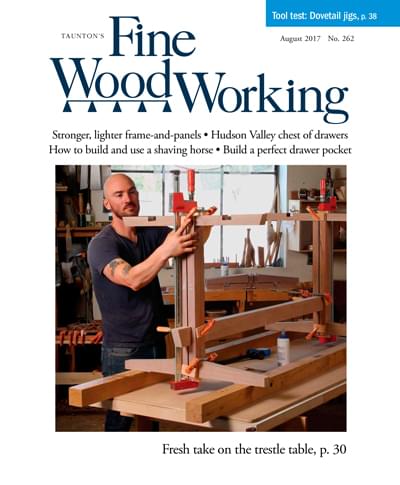The Physics of Handplaning
How the parts of a handplane work together to make perfect cuts.

Planes are more than just a collection of parts fitted together. Clearly some planes work a whole lot better than others. Why is this? Why can one plane curl up shaving after shaving from obstinate curly maple and leave a surface with an almost polished smoothness, where another plane chatters and clogs after a few uneven planing strokes? Certainly it’s a matter of tuning and a certain harmony among the parts, a sharp iron, choosing the right plane for the work, and knowing how to use it. But it’s more than this. Some planes just have physics in their favor.
Chip Formation
The dynamics of the cut is fairly basic physics. The plane’s cutting iron contacts the wood, driving a shaving into the throat that curls and breaks against the cutting edge of the iron (and against the cap iron, too, if the plane has one). Every part…
Start your 14-day FREE trial to continue reading this story.
Plus, access more than 1,900 in-depth articles and more when you become a member.
Start Your Free Trial NowAlready a member? Log In







Comments
Great excerpt. Clearest explanation I've seen. Thank you.
Awesome excerpt!
For readers who want even more, I also highly recommend "Making and Mastering Wood Planes" by David Finck. I only made 1 handplane from it, but the lessons he gave on steel and sharpening really helped my woodworking. Outside of in-person classes, that book probably had the biggest impact on my craft.
Log in or become a member to post a comment.
Sign up Log in